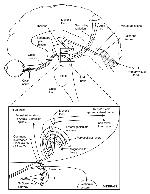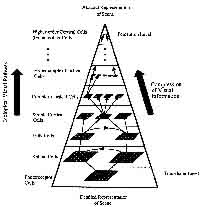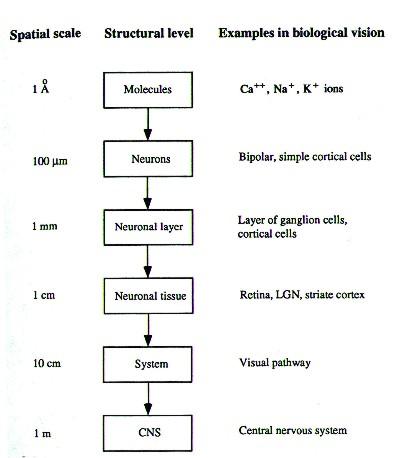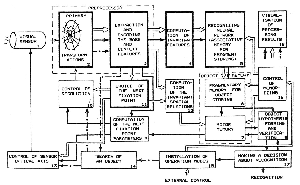(Click on underlined link to go to subject)
Chapter 1. Vision
System Design
Chapter 2. Biological Eye Designs
Chapter
3. Eye
Design
Illustrations
Chapter 4.
Eye
Reproduction
A.
General
requirements
1.
Optical,
computing and intelligence requirements
2.
Design
for eproduction
3.
Physical
development
requirements
B.
Optical
design and
integration
1.
Optical
design issues
2.
Programming
issues relative to probability
3.
Original
intelligence issues
C.
Design
control
1.
Control
of cell complexity
2. The
DNA
plan for control of cell integration
D. Questions and comments on evolution related to eye reproduction
Chapter
5. Optical
Systems
Design
Chapter
6. The Eye Designer
Related
Links
Appendix
A - Slide Show & Conference Speech by Curt Deckert
Appendix
B - Conference Speech by Curt Deckert
Appendix
C - Comments From Our Readers
Appendix
D - Panicked Evolutionists: The Stephen Meyer Controversy
Chapter 4
Section A
(Click on PICTURE IN TEXT to bring up LARGE PICTURE)
4. EYE
REPRODUCTION A.
General requirements
We will deal with
the reproduction of optical designs, biological reproduction of
computing requirements, overall vision system design and development,
and the integration of the biological eye reproduction process. Here I
take a practical engineering approach, instead of a traditional
biological approach based on unsupported hypotheses about origins.
Design depends on very exact quantitative and qualitative cause and
effect relationships.
|
By
"reproduction"
we are referring to
the process of duplicating identical types of eyes fromone generation
to another of a plant, animal or human.
Our Creator has designed "very high technology" into all kinds of
organisms. This may cause an illusion of macro-evolution, since
populations of specific organisms adapt genetically to a wide variety
of environments. Cause and effect provide one potential starting point
in considering consistent eye reproduction. What is the limit of capability of any creature, except man, to improve its vision? What if you had the assignment of providing vision to some creature? Would you talk to an biological eye expert at a local university? Professors of biology may not know what it takes to build or reproduce a vision system, but most optical designers can recognize good vision system design. We would not expect most academic biological scientists to have optical engineering design and development experience. It takes intelligence, inventiveness, and continuous experimentation to develop and perfect new optical technologies. This assumption may be missing, as scientists speculate on how nature creates the irreducibly complex building block cells of eyes. Contrast simplified diagrams of biological and optical designers. (Figs 4.1 and 4.2a from pg. 3 and 32, Neuro-Vision Systems, Ed. by Madan M. Gupta, George K. Knopf, IEEE Press, 1994) (Figs 4.2b-c by permission of James T Fulton, Dir of Research Vision Concepts) |
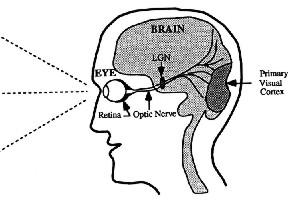
Vision Design Diagram Visual system including some brain detail |
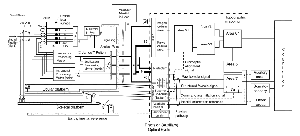
|
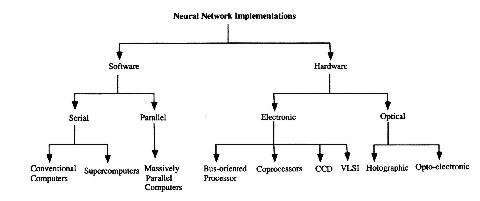
|
1. Optical, computing, and intelligence requirements
Most insects, animals and humans have at least two eyes for binocular vision. Both eyes require coordinated optical and image processing systems which have to be reproduced in very fine detail to provide good vision generation after generation. Brain cell intelligence provides coordination between eyes during reproduction, vision operation and then provides a repair process.
Many people may be able to put basic elements together to create a vision system. However, creating or developing it to function in the right order for reproduction of all the building blocks is a far greater challenge. Originally an intelligent plan was required to craft the DNA, to provide the plan to generate and arrange cells in the correct order. The DNA design also has to deal with the overall control to provide multiple chemical processors to coordinate the growth of each cell. Eye cell systems would never reproduce in a repeatable way without specific detailed plans for control of the process. There must be complete directions for eye reproduction at the DNA detail level to reproduce the next generation of eyes.
Even sight restored after being born blind requires intelligence, programming and learning. This can be more difficult to integrate than if vision occurred in a normal sequence of events. This illustrates the need for intelligent input
2. Design for reproduction
3. Physical development requirements
There also has to be power to do the work of chemical processing for reproduction, even if the DNA information is there. It takes a coordination of many complex-engineering design functions to provide sight, as we know it. At the present time, the process of completely understanding all details of the initial reproduction process design and development of reproducible eyes is beyond human capability.
Consistency in materials for basic building block cells, even with different food or fuel inputs, is required of all eye types. Eye materials have to be consistent, even though there may be significant input or food differences. The design or shape of materialsused in eyes must not change because of what we eat or drink. Multiple chemical processing plants reproduce new cells. Cells provide communication of intelligence to help heal and repair cells and to provide growth, as needed, according to an overall plan. Each cell is a factory system, like organs are systems of systems. Eyes are complex body systems that have complex systems of systems.
Reproduction must have an originating designer because of the communication of design details, which must occur in the process of vision reproduction. This is a very complex technology in the case of eye operation in a variety of environments such as temperature, pressure, available food, available light, wavelengths of light, etc. To leave good engineering design changes to random mutations could be destructive to the development and reproduction of eyes because of the close tolerance optical requirements of overall eye design. Original intelligent design suggests a means of orchestrating the technologies associated with complex eye formation and reproduction. The probability of this happening without intelligent design is so remote that probabilities approach one part in a number with at least 20 zeros. This calculated by taking the probability of each type of building blocks occurring and then the probability of one cell going to the correct cell to form a vision system. In any case, the probabilities are extremely low for vision systems occurring without intelligent designs.
Questions for Discussion
How does one explain the near perfection of a process that has produced consistent reproduction of eyes at rapid rates for millennia of time?
